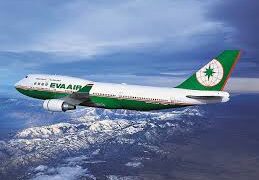In today’s digital age, where social media and online advertisements dominate, it’s easy to overlook the power of traditional marketing materials. However, professional flyer printing continues to be a highly effective way to promote businesses, events, and special offers. Flyers are versatile, cost-effective, and tangible marketing tools that allow businesses to make a lasting impression. When executed correctly, flyer campaigns can deliver excellent returns on investment and drive real-world engagement.
In this comprehensive guide, we will explore everything you need to know about professional flyer printing — from design and printing techniques to distribution strategies and benefits.
Why Flyers Still Work in Modern Marketing
Despite the rise of digital marketing, flyers remain relevant and valuable. Here’s why:
- Tangible and Memorable: Physical materials like flyers engage multiple senses, making them more memorable than digital ads.
- Targeted Distribution: Flyers can be handed out in specific locations or mailed to select audiences, ensuring focused reach.
- Budget-Friendly: Compared to online ads, flyers offer a low-cost marketing option, especially for local campaigns.
- Versatile Usage: Ideal for grand openings, product launches, sales events, real estate promotions, and community announcements.
Flyers bridge the gap between physical interaction and brand awareness, offering a personal touch in an otherwise digital world.
Elements of an Effective Flyer
To make the most of flyer printing, the design must be clear, compelling, and aligned with your brand. Key components of a well-designed flyer include:
1. Headline
This is the first thing people will read. Make it bold, engaging, and benefit-driven. For example:
“50% OFF This Weekend Only!” or “Grand Opening – Free Gifts Inside!”
2. Visuals
Use high-resolution images, branded colors, and clean layouts. Graphics should support the message, not overwhelm it. Infographics and icons can also enhance visual appeal.
3. Body Content
Keep the text concise and to the point. Highlight key benefits, offers, or event details using bullet points or short paragraphs.
4. Call-to-Action (CTA)
Tell your audience what to do next: “Visit our store,” “Call now,” “Book your spot,” or “Scan to learn more.”
5. Contact Information
Always include your phone number, website, social media handles, or physical address so people can reach you.
6. Branding
Incorporate your logo, brand colors, and tagline to maintain consistency and boost brand recognition.
Choosing the Right Flyer Size and Format
The format of your flyer depends on its purpose and how you intend to distribute it. Common flyer sizes include:
- A6 (105 x 148 mm): Small, postcard-style, perfect for handouts or inserts.
- A5 (148 x 210 mm): Popular for events and product promotions.
- A4 (210 x 297 mm): Great for detailed information and business profiles.
- DL (99 x 210 mm): Ideal for mailing and rack displays.
Folding Options:
Bi-fold or tri-fold flyers allow you to include more information without overwhelming the reader.
Paper Types and Finishes
The paper you choose plays a crucial role in how your flyer feels and performs. Key options include:
- Glossy Finish: Gives a shiny, vibrant look, ideal for image-heavy designs.
- Matte Finish: Offers a smooth, professional appearance suitable for text-heavy content.
- Uncoated Paper: Easy to write on, good for forms or notes.
- Cardstock (300gsm+): Thicker, more durable — great for premium marketing materials.
Choosing the right paper weight and finish can elevate your flyer from ordinary to impressive.
Professional vs. DIY Printing
While printing flyers at home or the office might seem cost-effective, professional printing offers clear advantages:
- Superior Quality: Professional printers provide crisp images, accurate colors, and sharp text.
- Custom Options: Access to various sizes, papers, coatings, and special finishes like UV spot coating or embossing.
- Bulk Printing Efficiency: Save time and money on large print runs.
- Consistency: Professional printers ensure each flyer looks the same — no misalignments or ink smudges.
Professional flyer printing is especially essential when your brand image is on the line.
Tips for Designing Flyers That Convert
- Know Your Audience: Tailor the design and message to your target demographic — age, interests, location, etc.
- Use Eye-Catching Colors: Choose bold and contrasting colors to draw attention while aligning with your brand identity.
- Limit Fonts: Stick to 2–3 fonts to keep the design clean and readable.
- Add a QR Code: Connect offline and online by linking to a website, video, or booking page.
- Proofread Carefully: Typos can ruin credibility. Double-check grammar, pricing, and contact details.
Smart Flyer Distribution Strategies
Creating a great flyer is just the beginning — getting it into the right hands matters just as much. Here are some effective distribution methods:
- Hand-to-Hand: Distribute flyers in high foot traffic areas like malls, colleges, or events.
- Direct Mail: Target specific neighborhoods or customer lists with personalized flyers.
- In-Store Display: Place flyers at your checkout counter or reception area.
- Partnerships: Collaborate with other businesses to place flyers at their premises.
- Door-to-Door Drops: Leave flyers at residential or office doors in your target area.
The right distribution strategy will depend on your goals, budget, and target audience.
Industries That Benefit Most from Flyer Printing
Flyers work well across industries, especially:
- Retail Stores: Promote sales, new arrivals, and store openings.
- Restaurants & Cafes: Share menus, discounts, and food delivery offers.
- Real Estate: Highlight listings and open house events.
- Education: Announce admission openings, courses, or workshops.
- Healthcare: Advertise clinics, health camps, and new services.
- Event Organizers: Market concerts, festivals, fundraisers, and conferences.
The Environmental Side of Flyer Printing
Sustainability is becoming a key concern for many businesses. Here are eco-friendly practices to consider:
- Use Recycled Paper: Many printing companies offer quality recycled options.
- Vegetable-Based Inks: These inks reduce harmful emissions and are biodegradable.
- Print-On-Demand: Avoid waste by printing only what you need.
- Encourage Digital Follow-Ups: Use QR codes or links for further info instead of bulky printed content.
Eco-conscious flyer printing helps the planet and appeals to environmentally aware consumers.
Conclusion: Is Professional Flyer Printing Worth It?
Absolutely. Whether you’re launching a new product, promoting a seasonal sale, or announcing an event, flyers remain one of the most direct, cost-effective, and creative marketing tools available.
When designed well and printed professionally, flyers can capture attention, deliver key information quickly, and encourage your audience to take action. With endless customization options and smart distribution, your flyer campaign can generate real engagement and long-term brand awareness. If you’re looking for a powerful way to connect with your audience offline, investing in professional flyer printing is a move that delivers results.




















